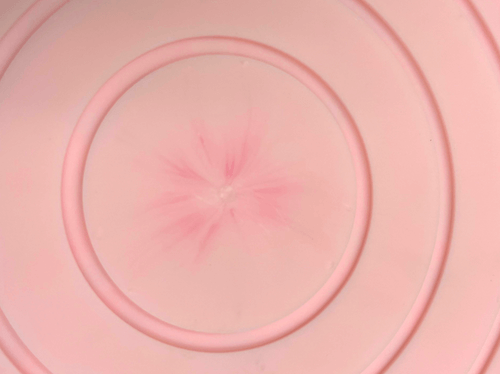Color consistency plays a vital role in determining the quality and aesthetic appeal of your final product. Inconsistent coloring can indicate that a manufacturer was careless or lacked the expertise to create a uniform product, which could reflect poorly on your brand name.
To help you achieve excellent color consistency, we’ve put together tips on how to identify key markers of consistently colored products. This will give you a better understanding of the contributing factors to improved color consistency, so you can avoid inconsistencies in your manufacturing processes.
Signs of Poor Color Consistency
- Uneven color distribution: This can be easily noticeable on large parts or when comparing different parts side by side. The color may appear to have darker or lighter areas or may vary from one part to another.
- Streaks or patches: Different-colored streaks or patches may be present in the silicone part.
- Discoloration over time: If the silicone part is exposed to certain environmental conditions or chemicals, it may change color over time.
This is what a pigment streak looks like in a silicone product:

Contributing Factors of Poor Color Consistency
- Mold design: Your quest for color consistency starts well before colors are even mixed. The design and processing of your product mold can impact how your color turns out. It’s extremely helpful to work with an experienced silicone manufacturer so they can flag issues with your mold design early in the process and save you time and money on your initial mold development.
- Poor color matching: When the manufacturer can't produce an exact match to an existing product color.
- Improper mixing techniques: If the coloring agent is not mixed properly with the silicone base, it can result in uneven color distribution, streaks, or patches. Some colors are blended from multiple other colors and are more likely to streak than a single color blend. These multi-color combos require a particular gate design and/or unique processing parameters to help eliminate/reduce streaking.
- Ineffective coloring processes: In some cases, the coloring agent may not be compatible with the silicone base, or the manufacturer may use an ineffective coloring process resulting in poor color consistency.
- Environmental controls: Changes in temperature, humidity, or other environmental factors can affect the color of silicone parts during the manufacturing process. It's essential to have appropriate environmental controls in place to maintain consistent color.
Solutions for Improved Color Consistency
The key to achieving color consistency in silicone parts is to work with a manufacturer experienced in color selection and has robust quality control measures in place. A good manufacturer will collaborate with you to understand your specific requirements and preferences for color. They provide expert guidance on material selection and color matching, while utilizing advanced equipment and techniques to ensure consistency throughout the manufacturing process.
At Extreme Molding, we have a large team of experts who can help you select the ideal color of your product to ensure high-quality and consistent coloring. Contact us to learn more.

